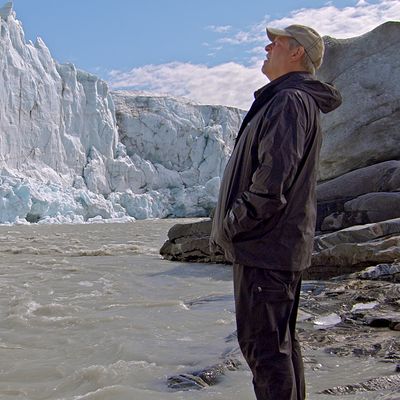
The first time I saw An Inconvenient Sequel: Truth to Power was at this year’s Sundance Film Festival, the opening film at a week that will go down in my memory as one of the strangest, most existential moments in showbiz I’ve ever borne witness to. The inauguration of Donald Trump as the 45th president of the United States took place on Day Two, upstaging just about every film premiere and party as a palpable malaise settled over Park City. Looking around, it was easy to imagine that everyone in the theater was one glass of wine away from declaring that Trump’s defunding of the NEH and the EPA was just a warning shot, and by this time next year we wouldn’t even have movies, much less an Earth to watch them on.
To open that festival with the follow-up to the Oscar-winning 2006 documentary An Inconvenient Truth felt like an especially cruel twist of the knife, especially with its upbeat, optimistic coda that felt like a pre–November 2016 artifact. Nowhere in Truth to Power is it suggested that anything has gotten better for the planet since 2007 — despite leaps and bounds being made in green-energy infrastructure around the world. Instead, directors Jon Shenk and Bonni Cohen center their film more around Al Gore as a personality as he travels the world, showing his slideshow in an effort to recruit an international network of climate advocates and educators. As a character study, it’s highly successful, but given the context it will be watched in — albeit not quite as oxygen-deprived and manic as Sundance — it feels a little too pat.
Those with any memory of the 2000 election — which was won by George W. Bush in a Supreme Court ruling and still comes up multiple times in Truth to Power — might find “Gore” and “personality” to be contradictory terms, but here there’s a kind of beleaguered, good-natured appeal to his Southern monotone. He’s still just about the most soothing person to warn anyone of an impending apocalypse, but his even keel and lack of drama are exactly what makes him compelling in this position. The film has received some snark as a supposed ego stroke for the put-upon former vice-president, but I simply don’t buy it. This isn’t Leonardo DiCaprio flying charter planes over polar bears; much of the work we see Gore do in the film is rather unglamorous, performed over the phone and in dreary, fluorescent-lit board rooms.
These sequences, including an extended behind-the-scenes account of Gore’s negotiations to get India off coal power at the 2016 Paris Climate Agreement, are the reason to see the film. For those of us who need no convincing of the truth of man-made climate change, but find the problem too paralyzingly abstract, Gore’s workmanlike methods are both fascinating, encouraging, and, yes, even a little exciting. There are plenty of updates to the slideshow, and a jaunt to Greenland the likes of which have become part of the film grammar of the eco-doc in the past decade. But these late-night calls and hastily set-up meetings feel illuminating in a way we haven’t seen before.
Shenk and Cohen turn the cameras off for the most tantalizing meeting of all: Gore’s visit to Trump Tower following the 2016 election. You’re left wondering not only what Gore would say to Trump — even in a meeting that was likely more ceremonial than anything else — but also what he would say about all the deregulation the president has enacted since coming to office. The film ends with a hastily added coda about states and cities stepping up to do the work the federal government will not, but it speeds through these ideas like it’s getting the “wrap it up” sign from the back of the room. But ironically, that’s the eco-doc we need more than ever now: something with Gore’s sleeve-rolling, straight-talking approach to make those kinds of nitty-gritty local efforts seem not only exciting, but possible.




